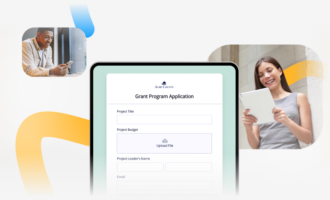The graphic design industry shifts and evolves as new technology arrives on the scene. Over the decades, design has gone from hand drawn to computerized to artificial intelligence. Not too many years ago, designers needed to be able to code to stay relevant, but that is no longer a necessity.
There are approximately 172,081 graphic designers working for businesses in an industry with about 3.6 percent annual growth. In addition, many graphic designers work as freelancers. Everyone in the industry needs to ramp up their knowledge to gain a competitive edge against the others. Here are 14 skills every designer needs.
1. Learn coding
As mentioned above, nowadays you don’t have to know coding to design. However, basic coding skills are quite useful to designers, particularly when you take on a web design project.
Imagine you’re in the middle of designing a WordPress website. That sounds simple — install the software, find a theme, and go, right? What if you need to customize the look, and the theme doesn’t allow for that? You’ll need essential coding skills to add CSS code to the theme and change whatever elements you need to customize the website.
You don’t need a degree in coding — you only need an understanding of the basics.
2. Understand digital typography
You more than likely studied typography extensively when getting your design-related degree. However, typography is increasingly digital, and the way different fonts appear online differs from the way they look in print. A deeper understanding of which fonts work best in an online environment is a must. Understand the pixels of different fonts and ones made to scale to different screen sizes, such as mobile devices.
3. Master environmental graphics
A majority of both men and women feel the design of their workspace impacts their productivity.
Likewise, more and more companies see the advantages of environmental graphics — immersive experience graphics for brick-and-mortar stores and events. Designing environmental graphics requires the ability to look at the design space as a whole and figure out the best use of wall and floor space.
To improve your environmental design skills, study large-scale design and pay attention to the experience that stores and office buildings create for visitors.
4. Embrace perseverance
Many people love starting new projects, but sticking with them through the end is more of a challenge. Developing perseverance require a few specific steps, such as writing down your goals, breaking them into manageable tasks, and tracking progress along the way.
5. Master common software
If you work on staff, your company expects you to know programs such as Photoshop and InDesign, but these programs are also helpful if you’re a freelancer. Sometimes, you’ll work with a client who already has in-house staff using these programs. A working knowledge of Photoshop, InDesign, and Illustrator is advantageous to a designer any time, even if you wind up using different methods in design creation.
6. Gain experience
Look through job postings for graphic designers, and you’ll see that most employers want a minimum of two years’ experience in the field. If you don’t yet have that much experience, spend time gaining experience in a variety of areas. Take on a part-time internship with a local design firm, or volunteer your services at a local nonprofit you believe in. Set out to master as many skills as possible and show that mastery through work experience.
7. Build image editing skills
Over the last few years, businesses have made highly relevant, rich photography part of their content strategies. Now is the time to enhance your image editing skills. Picture a scenario where a client brings you a photo of their product, but there are some minor issues with lighting or background noise. Fortunately, with the right tools and knowledge, you can take their mediocre photo and make it extraordinary.
There’s no need to head back to school to learn how to edit images. Just use online Photoshop tutorials and try out new methods in your free time.
8. Discover color grading
Videos are the wave of the future. Experts predict that by 2021 video will account for 82 percent of Internet traffic. Making your videos amazing will allow you to stand out from the crowd. Study color grading so you can create videos that are vibrant and attention grabbing.
9. Know your niche
Every designer has work that they excel at and love to create, such as print ads or websites for small businesses. Take time to figure out which types of designs bring you joy. Line up what you enjoy with what you’re good at, and you’ve found your niche. Once you know your niche, focus on building your skills until you are the best in that field.
10. Get organized
Organization may not be the first skill that comes to mind when you think about design work, but it’s a vital part of managing projects and delivering on deadline. Information about getting organized abounds, from breaking up tasks by order of importance to creating minute-by-minute schedules. Find the method that works best for you. Try out tools such as online planners, project management software, and writing down to-do lists.
11. Learn a new content management platform
In 2020, it’s worth your time to learn a new CMS. For example, if you already know WordPress inside and out, study up on Drupal or Magento. All the major content management platforms offer online tutorials. You’ll also find tutorials from third parties on sites like YouTube. Invest time learning the ins and outs of different platforms and mention those platforms on your resume.
12. Figure out UX design principles
More and more companies realize the importance of the user experience today. Adding some user experience (UX) design skills to your repertoire makes you more desirable to employers. Study proper UX methods and use A/B testing to figure out which elements work best for each client’s website.
13. Learn augmented reality
Experts predict that the augmented reality market will see a huge increase in revenue. Because of its rising popularity, more businesses are investing in this technology. Understanding how it works and offering design ideas geared toward an AR market builds your resume.
14. Study technology
Along that same vein, studying new technology as it emerges will keep your skills up to date and make you ready for whatever the market brings. Ten years ago, no one thought artificial intelligence would take center stage and help the average person build a website. The move toward more streamlined web design shifts the focus to more creative and backend endeavors that weren’t possible a decade ago but are essential today.
Continued growth
The longer you work in graphic design, the more you’ll realize the industry morphs into something new every few years. Study new topics, stay on top of technology, and add to your skills. Being a graphic designer requires ongoing education both in the world at large and through free or fee-based courses that will help you brush up on existing skills and gain new ones.







































































Send Comment:
1 Comments:
More than a year ago
thanks for sharing an amazing article!
visit us arenaanimationudaipur.com